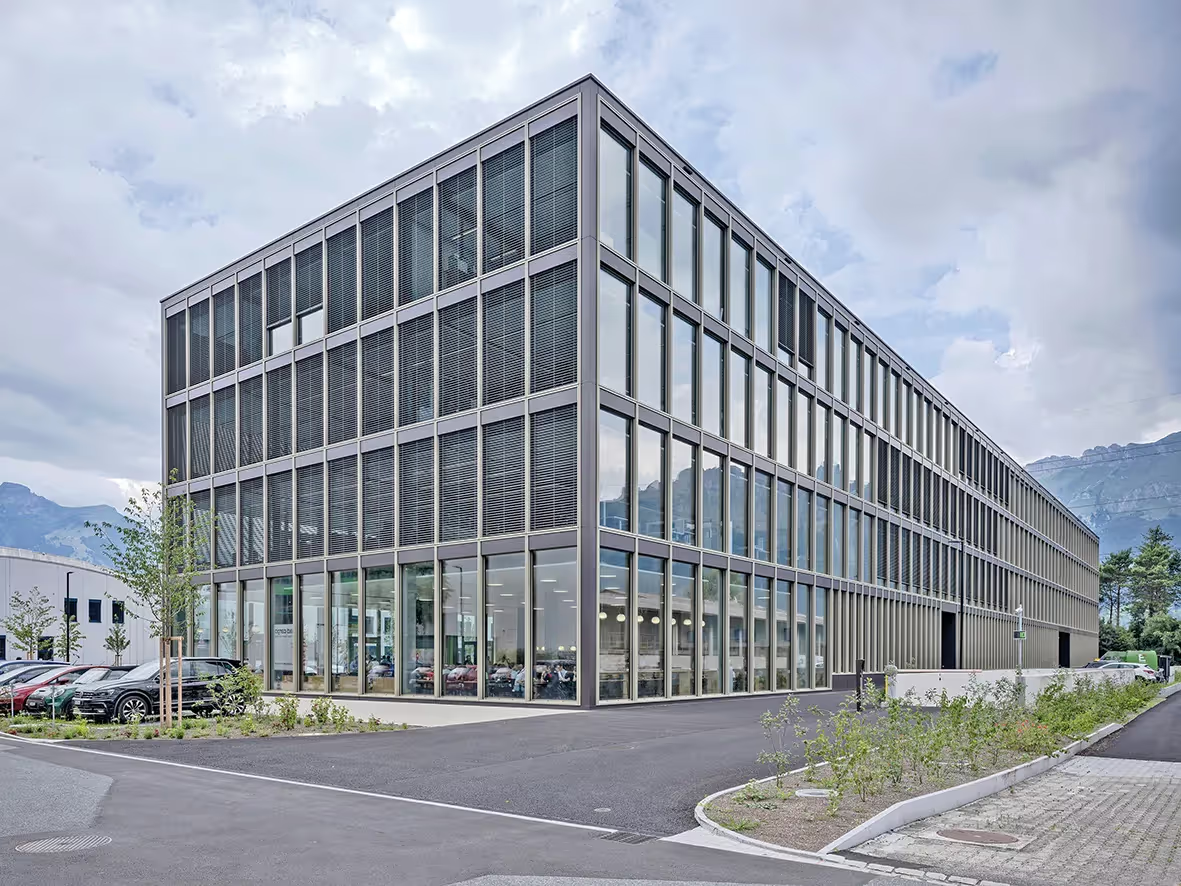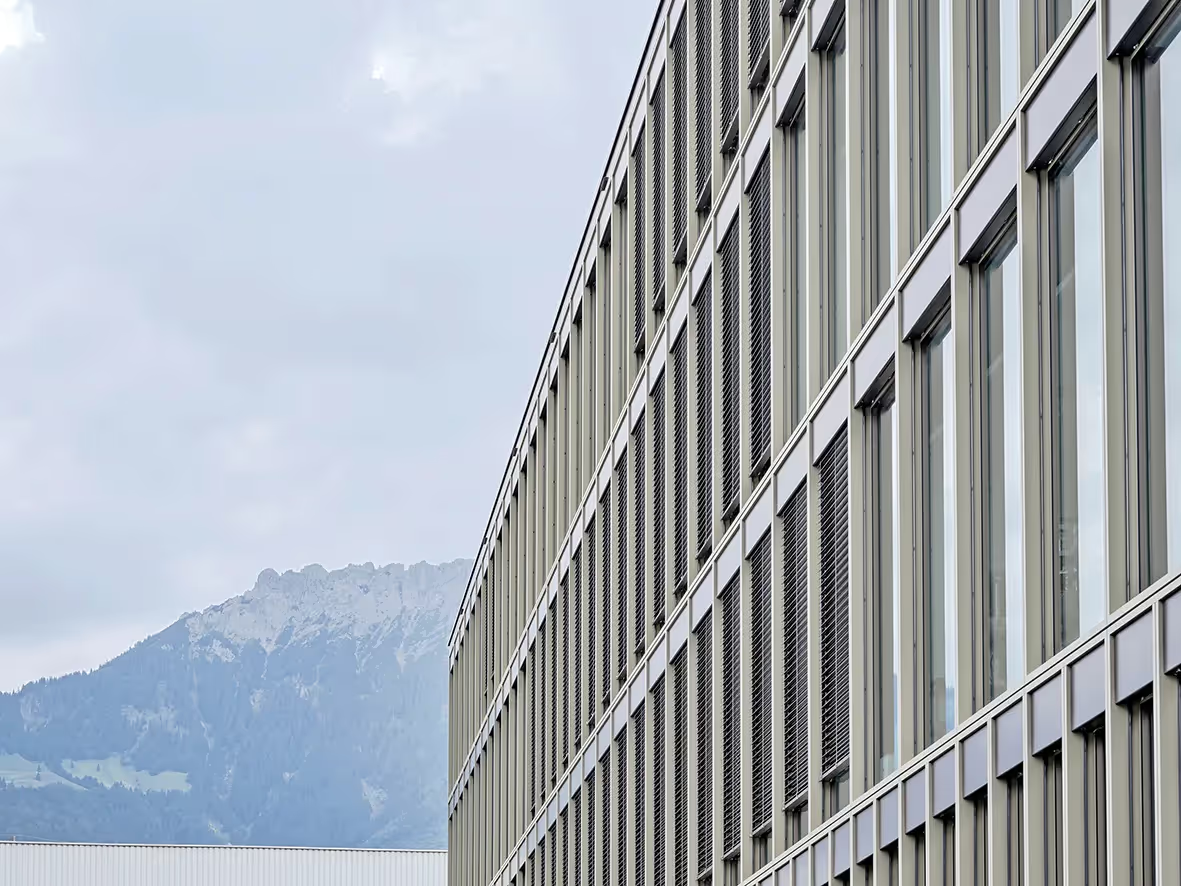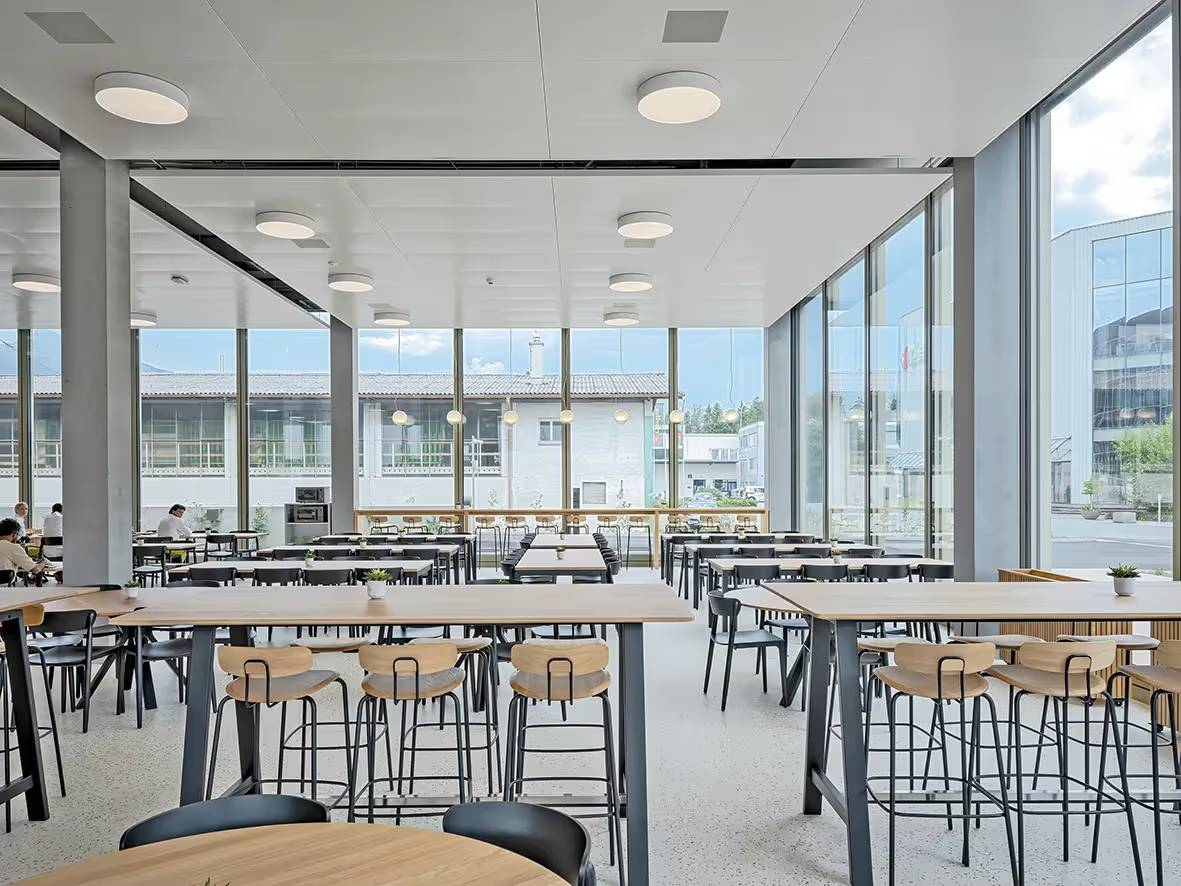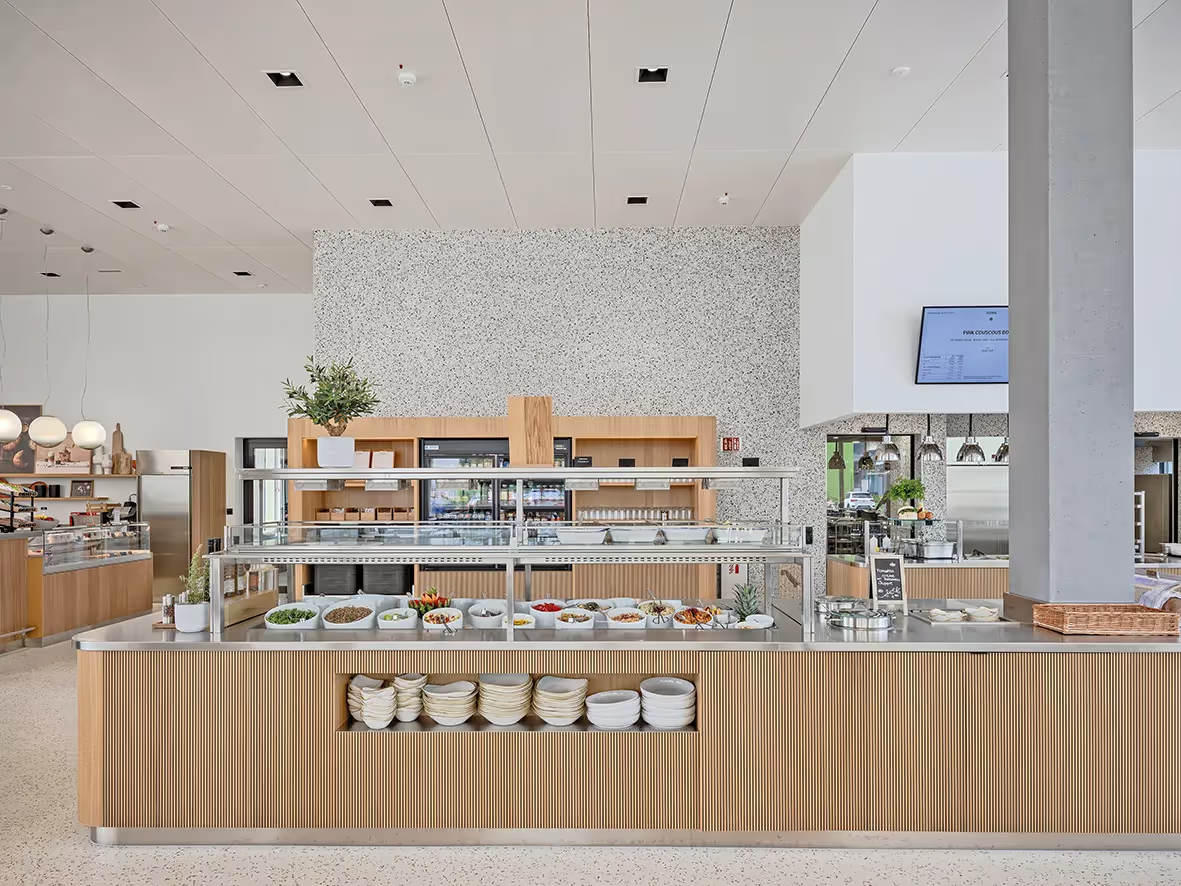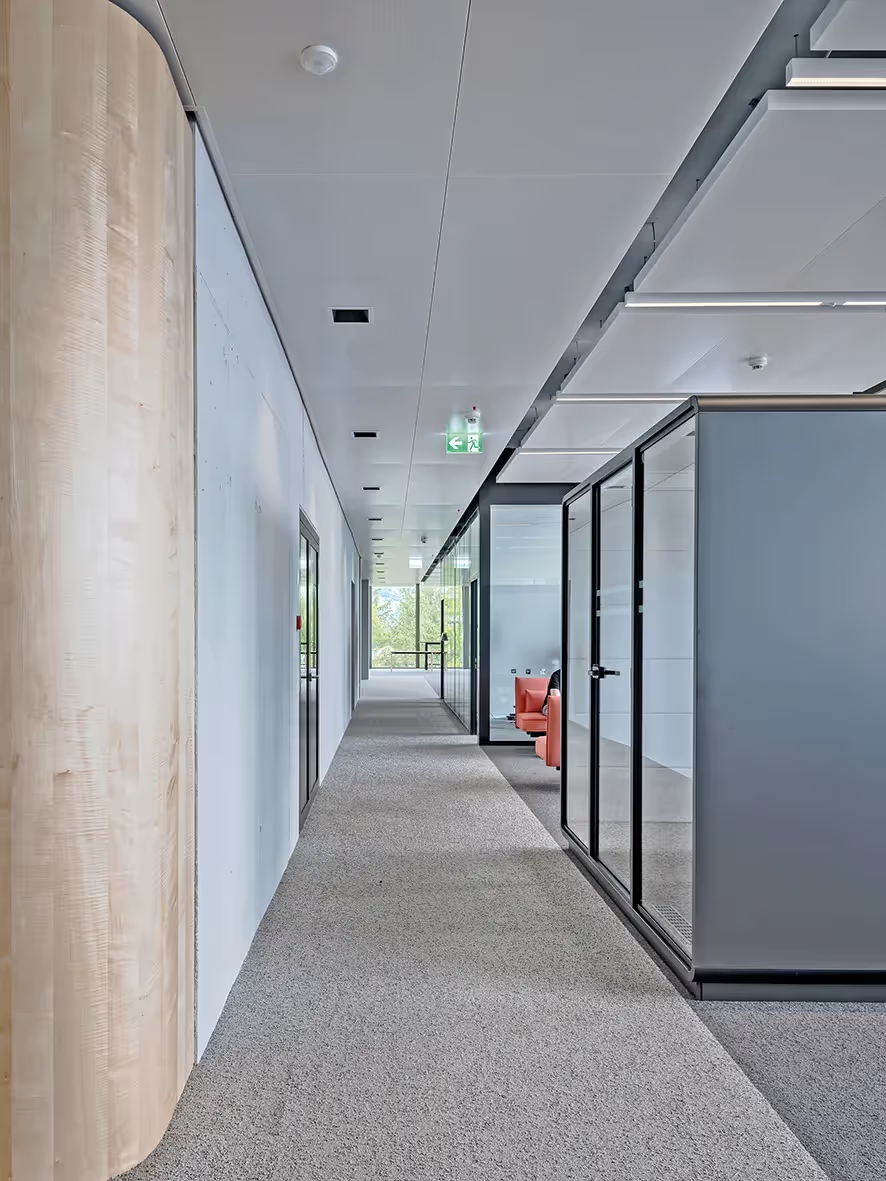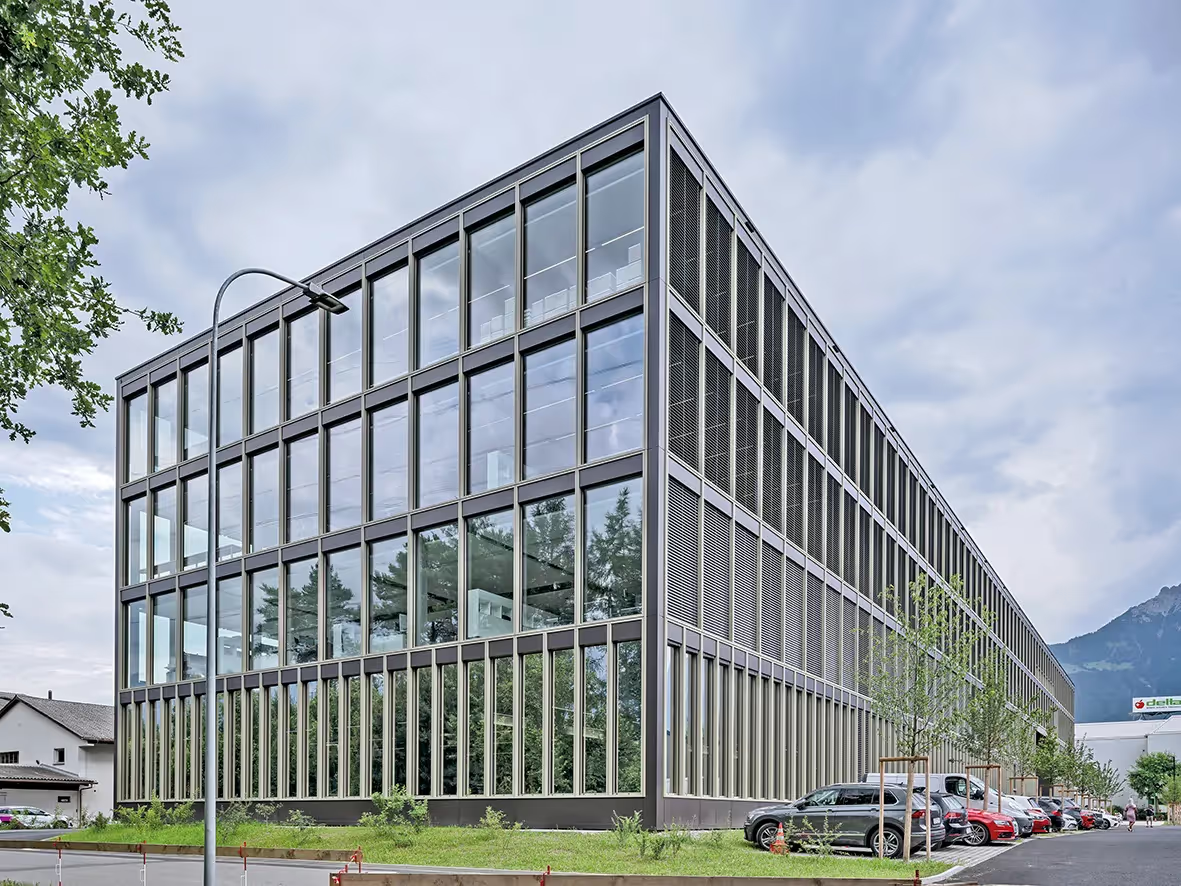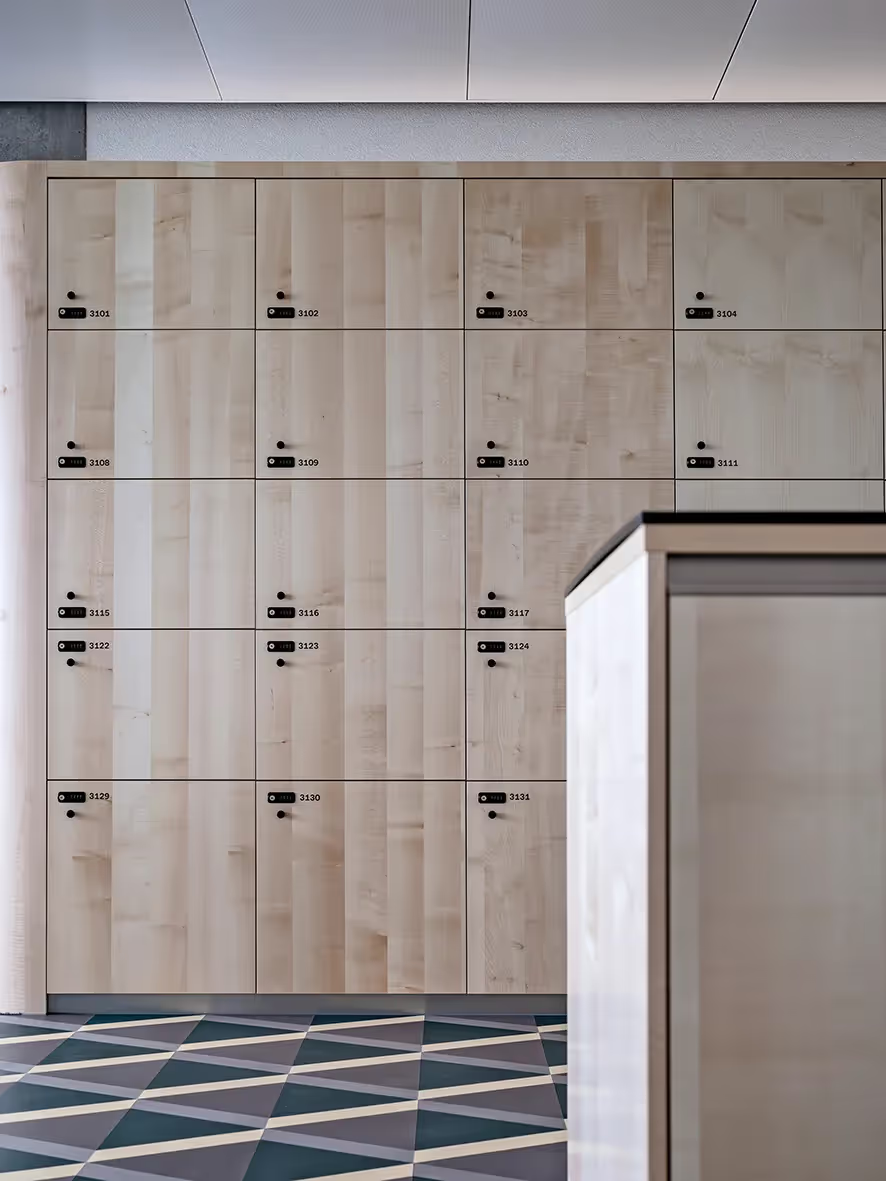HISTORY/LOCATION
Located on the Rhine Valley plain, the village of Haag (St. Gallen) lies on the left bank of the Rhine in the north of the Werdenberg region. It has around 1,500 inhabitants and belongs to the municipality of Sennwald. Haag is also the global headquarters of the VAT Group, an international manufacturer of vacuum valves with various applications, including in the semiconductor industry. Here, on the company site in the south of the village, a new R&D centre has been completed by design-build contractor HRS Real Estate AG.
CONCEPT/ARCHITECTURE
The new building will enable the VAT Group to strengthen its position as a technology leader in the field of high-precision vacuum valves at its headquarters. Covering an area of around 12,000 m2 and spanning four floors (excluding the underground car park), the innovation centre is the bedrock of the VAT campus in Haag. A suite of brand-new, state-of-the-art research laboratories is home to VAT’s global R&D department, bringing together all the Group’s research and development activities in Switzerland under one roof.
The new building also houses meeting rooms, offices and catering facilities for employees and visitors. The building offers space for a total of 400 workstations. The underground car park with 121 parking spaces is located in the basement, while a technical storey is situated above the third floor.
CHALLENGES
As the planned building and ridge height did not conform to the building regulations of the municipality of Sennwald, a special land use plan was first required.
The excavated material was contaminated with geogenic arsenic and had to be specially disposed of. The excavation pit was enclosed by a sheet piling wall and the groundwater lowered using individual wells. A network of survey points was used for monitoring to ensure that no subsidence occurred in the surrounding area. The prefabricated façade elements were assembled without scaffolding.
ENERGY CONCEPT/SUSTAINABILITY
The operation of the building is 100% carbon neutral and meets the criteria of the LEED (Leadership in Energy and Environmental Design) Gold sustainability certificate. The LEED label covers all phases of the life cycle.
The assessment criteria include Sustainable Sites, Water Efficiency, Energy & Atmosphere, Materials & Resources, Indoor Environmental Quality, Innovation and Design.
Groundwater is used as an energy source for the heating and cooling processes of the building services systems. The required amount is extracted from the groundwater well and an energy storage system is implemented with the aid of a heat exchanger. Two water-to-water heat pumps obtain the primary energy from this and use it to generate hot water through a thermodynamic process. In turn, this operates a heat storage system to which the consumers are connected. The heat is distributed via radiant ceilings.
The full air conditioning system ensures that the minimum outdoor air volume flow is achieved and that good indoor air quality is maintained. The air is treated using the four thermodynamic processes of heating, cooling, humidifying and dehumidifying. The load is likewise removed via the radiant ceilings.
A photovoltaic system has been installed on the roof in combination with roof greening. Retention areas surrounding the ground floor are used to manage the rainwater.

